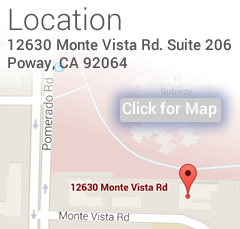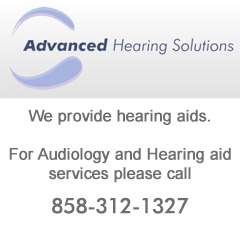Voice Conditions & Treatment in Poway, San Diego
CHRONIC HOARSENESS
Hoarseness is also known as dysphonia. It is any change or abnormality in the sound of the voice. It is different from dysarthria which is an abnormality in enunciation or the articulation of speech. Hoarseness is usually caused by changes to the voice box, or larynx, and it is deemed chronic when it lasts longer than 4 to 6 weeks. The larynx has 3 primary functions. Besides its function in speaking, it also regulates swallowing and breathing. For this reason, when there is dysfunction in the voice box causing hoarseness, the patient may also experience changes in their swallowing (dysphagia) and breathing (dyspnea) as well as chronic throat clearing or coughing.
Laryngitis is any inflammation of the voice box and is the most common cause of hoarseness. Laryngitis that comes on suddenly is usually caused by viral or bacterial infections. Viral infections generally resolve on their own whereas bacterial infections require antibiotics. Some patients, such as those who are on steroid inhalers, acquire a fungal laryngitis which can also be treated by antifungal medications. Other common causes of laryngitis include acid reflux as well as allergies. This kind of laryngitis tends to be more gradual and lasts longer (usually weeks or months). Treating the underlying cause of the hoarseness is the best way to resolve the symptoms.
When evaluating a patient for hoarseness, it is important to get a clear history from the patient regarding when the hoarseness started, whether there were any precipitating events such as illness or emotional stress. The patient should describe how their voice has changed, whether it is raspy, breathy, strained, quieter, or higher or lower in pitch. Any history of vocal abuse such as prolonged speaking, singing, or yelling should be discussed. Also, any aggravating factors such as smoking, heartburn, or allergies needs to be addressed. On physical exam, the ears, nose, mouth, and neck need to be carefully examined to rule out other causes of hoarseness. A laryngoscopy is an endoscopic procedure which is done usually with the patient awake, and it allows for the visualization and functional assessment of the voice box. During this procedure, a physician would be able to assess if there are any lesions of the voice box causing hoarseness. She would also be able to assess the strength of the voice box, whether it is moving normally or if there are any weakness or spasms in the muscles of the voice box. The vocal cords, or vocal folds, are the functional portion of the voice box that move and squeeze together every time we speak or swallow. A stroboscopy is a special kind of laryngoscopy whereby a flashing light is used to visualize the vibrations of the vocal folds. Abnormalities in the vibration of the vocal folds result in hoarseness. In addition to testing in the office, your doctor may also order imaging of the neck if there are any lumps detected during the exam. Tests for swallowing or breathing may also be ordered depending on the patient’s needs.
Treatment for hoarseness depends primarily on the cause. Good vocal hygiene provides a foundation on which to build treatment. Increasing hydration and limiting extended voice use allows the voice box to recover from the trauma of overuse or misuse. Controlling any acid reflux and allergies helps to reduce these aggravating factors which can make the voice worse. Lifestyle modifications to reduce the effects of acid reflux include diet changes to limit spices, caffeine, citrus and tomato products, carbonated drinks, fatty foods, chocolate, mints, and alcohol. Eating smaller, more frequent meals and avoiding foods within 2 to 3 hours of bedtime can also help reduce reflux. Using a sinus rinse can improve hydration as well as help with allergies and post nasal drainage.
Working with a speech therapist is an important factor in rehabilitating the voice. He can help not only to strengthen the muscles of the voice box but also teach the patient to use them in the correct manner so as to not strain the accessory muscles of the neck and shoulders. He can also teach special breathing techniques to reduce laryngeal irritability and chronic cough. In addition to speech therapy, there are also multiple procedures available to rehabilitate the voice when there is dysfunction, depending on the cause.
Below are a few additional common causes of chronic hoarseness:
Vocal cord nodules (Singer’s nodules)
These are benign lumps on both vocal folds which generally result from vocal trauma or overuse of the voice. Patients may notice that their voice is more raspy, less clear in tone, and they may experience vocal fatigue. Generally resting the voice will help these nodules to resolve on their own. Speech therapy can be very helpful in preventing these from occurring or recurring in the future.
Vocal cord polyp
This is a benign lump on one vocal cord which may also result from vocal trauma. Symptoms may be similar to patients with vocal cord nodules. However, polyps usually will not resolve with voice rest alone and will require a procedure to remove the mass.
Vocal fold atrophy
As we age, the muscles in our body tends to weaken and become thinner. Likewise, the voice box is made up of multiple muscles that can also atrophy as we get older. After the age of 60, it is very common for adults to experience vocal cord atrophy. Patients generally complain that their voice is softer, higher pitched, and they have difficulty projecting their voice. Some patients may experience a chronic cough. In more severe cases, patients may have choking or coughing when drinking liquids or may develop recurring aspiration pneumonia. Speech therapy can help to strengthen the muscles of the voice box, improving its strength and tone. The vocal folds themselves can also be augmented using various fillers similar to those used for filling the lips in cosmetic procedures. Making the vocal folds plumper helps them to vibrate together better, improving the quality and volume of the voice.
Vocal cord paralysis
In patients with vocal cord paralysis, one or both vocal folds are not moving. The voice tends to be very weak and breathy. Drinking may result in coughing or choking. The patient may complain that it is difficult to get a full breath in. Paralysis may occur suddenly after a procedure such as a surgery around the neck (thyroid surgery, cervical spine surgery), heart surgery, or rarely after intubation. It may also happen as a result of a stroke or other neurologic condition. If there is not an inciting event, imaging needs to be performed to rule out any tumors which may be impinging on the nerves to the voice box, causing it to be weak. Sometimes after a thorough work-up, no cause for the paralysis is found, and these cases are usually attributed to post-viral effects. In these cases, it is possible for the paralysis to reverse itself up to a year after it loses its function. In the mean time, there are various arms of treatment available depending on the severity of the weakness. Speech therapy can help to strengthen the muscles of the voice box. The vocal folds themselves can be augmented, making them plumper, allowing them to vibrate together better to improve the quality of the voice.
Throat Cancer
For patients with cancer of the throat, if the cancer is affecting the voice box, it will often cause changes in the voice. It may also result in difficulty swallowing or breathing. The patient may also notice a lump on the side of the neck, unintentional weight loss, or ear pain. The cancer can be visualized by performing a laryngoscopy, but the diagnosis is not made until a biopsy definitively determines that there is cancer. Treatment may involve surgery, radiation therapy, and chemotherapy.
SAN DIEGO RANCHO ENT IS A DIFFERENT KIND OF MEDICAL PRACTICE
At Rancho Ear, Nose and Throat we are a doctor’s office:
- Where we strive to keep you on time because we know your time is valuable.
- Where phone calls are answered by our helpful team members, not an automated system.
- Where our staff looks you in the eye when you walk in—and greets you by name.
- Where appointments last as long as it takes to answer all your questions.
- Where your doctor learns your history & works with you to create a treatment plan you are completely comfortable with.
- Where the focus is on you, not your paperwork.
- Where you are a person as well as a patient.






